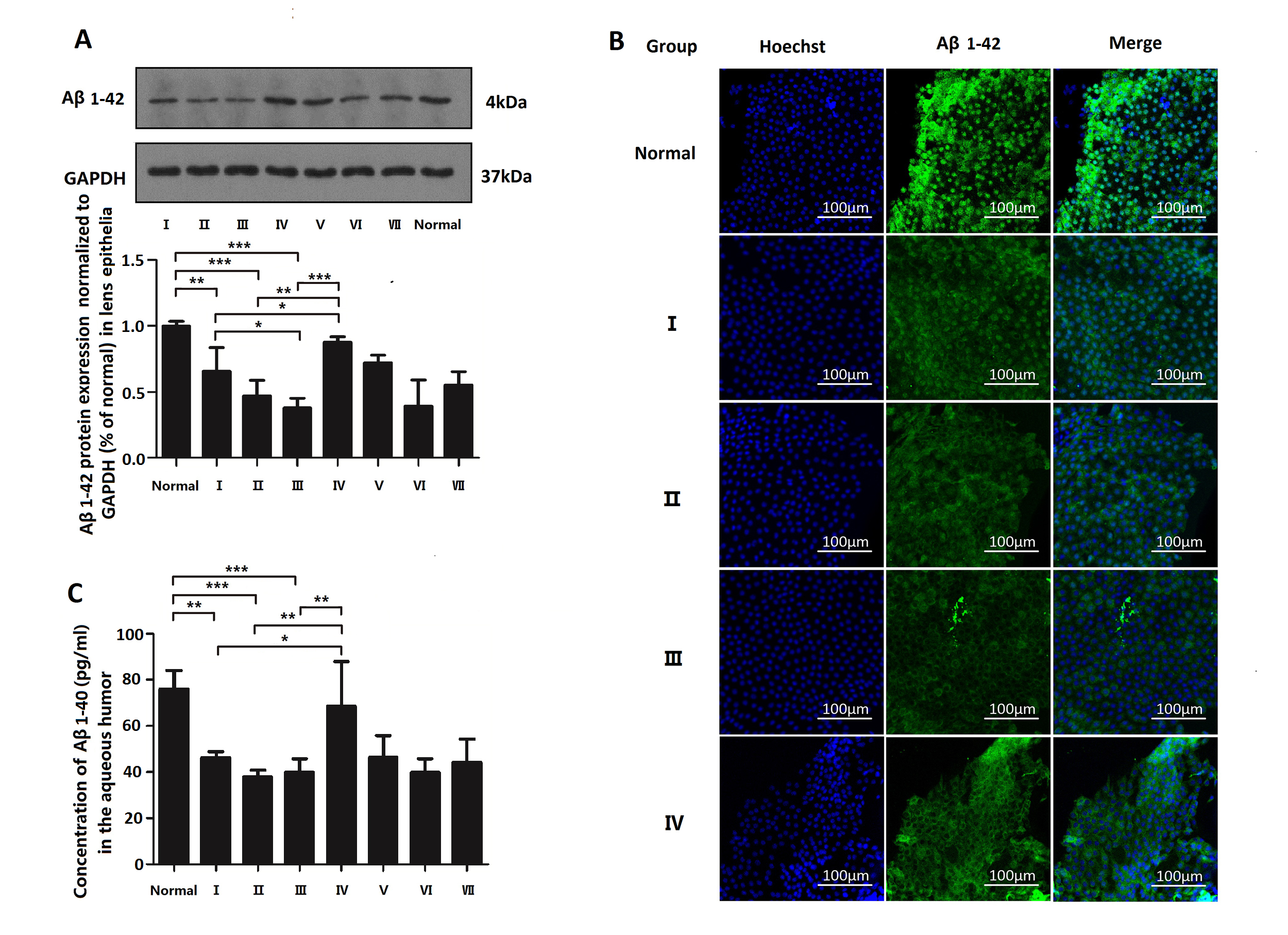Figure 1. Aβ expression levels in lens epithelia and aqueous humor of healthy and cataract eyes. A: Western blot analysis of β-amyloid (Aβ) 1–42 in lens epithelia. B: Immunofluorescence of Aβ 1–42 and Hoechst nuclear staining in lens epithelia. C: Enzyme-linked immunosorbent assay (ELISA) of Aβ 1–40 in the aqueous humor. The cortical (C), nuclear (N), or posterior subcapsular
(P) opacity of the cataract was classified with the Lens Opacities Classification System III (LOCS III), with an increasing
cataract severity from Group I to Group IV. Group I: C2–3N1–2; Group II, C3–4N2–3; Group III, C4–5N3–4; Group IV, C4–5N4–5;
Group V, posterior subcapsular senile cataract (P2–P4, with C<2 and n<2); Group VI, cataract with myopia; Group VII, cataract
with diabetes; and the healthy group, healthy tissue samples. In each group, three independent experiments were performed.
The data are the means ± standard deviation (SD). *p<0.05, **p<0.01, ***p<0.001, with one-way ANOVA and least significant
difference (LSD) tests among Groups I to IV and the healthy group. Healthy samples were used as normal controls. Aβ 1–42 protein
expression (% of healthy) in the lens epithelia was normalized to GAPDH.

 Figure 1 of
Xu, Mol Vis 2017; 23:1015-1028.
Figure 1 of
Xu, Mol Vis 2017; 23:1015-1028.  Figure 1 of
Xu, Mol Vis 2017; 23:1015-1028.
Figure 1 of
Xu, Mol Vis 2017; 23:1015-1028. 